Depending on your goals, something like this may work by just scaling the density curve using multiplication:
ggplot(df, aes(x=x)) + geom_histogram() + geom_density(aes(y=..density..*10))
or
ggplot(df, aes(x=x)) + geom_histogram() + geom_density(aes(y=..count../10))
Choose other values (instead of 10) if you want to scale things differently.
Edit:
Since you are defining your scaling factor in the global environment, you can define it within aes:
ggplot(df, aes(x=x)) + geom_histogram() + geom_density(aes(n=n, y=..density..*n))
# or
ggplot(df, aes(x=x, n=n)) + geom_histogram() + geom_density(aes(y=..density..*n))
or another, less nice way using get:
ggplot(df, aes(x=x)) +
geom_histogram() +
geom_density(aes(y=..density.. * get("n", pos = .GlobalEnv)))
